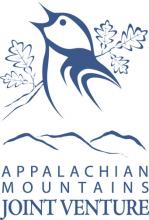
Golden-winged warblers in southern New York State maintain their genetic integrity thanks to habitat enhancement projects
By Jessica Shea
Bee-buzz-buzz
Only the most discerning birders’ ears can suss out the rare golden-winged warblers’ song while walking in the wetlands of Harriman and Sterling Forest State Parks in New York. Golden-winged warblers and their elusive melody were in danger of disappearing from their southern New York State breeding grounds. Habitat enhancement, funded in part by a grant through the North American Wetlands Conservation Act, is helping to ensure the species’ continued success.
Sporting their namesake wings and distinct yellow cap with black mask, golden-winged warblers are about the size of a small apple. Weighing in at only a third of an ounce, however, these diminutive birds are true featherweights. The migrating songbirds winter in Central and South America. Come spring, they fly north along the Eastern seaboard, nesting along the way from the Virginias to the mid-Atlantic, the Upper Midwest, the Northeast, and Canada. The majority of the warbler population settles in the Great Lakes region of the United States and Canada.
“The Hudson Highlands is a forested and lake-filled area of southern New York State surrounding the Hudson River that has long supported populations of nesting golden-winged warblers,” explains Matthew Shook, director of development at the Palisades Interstate Park Commission.
Golden-winged warblers preferred wetland nesting habitat in Harriman and Sterling Forest State Parks was threatened by invasive phragmites and red maple encroachment, afflictions that sound as menacing as horrors from a science fiction film. Invasive phragmites are non-native common reeds that take over wetlands. Common reeds can grow as tall as a two-story house and hedge out golden-winged warblers’ favorite nesting sites: cattails and sedge, a wispy grass-like plant that grows in clumps.
Access the full article below.
